EXHIBITIONS AND CONFERENCES

SPIE Defense + Commercial Sensing
April 21 - 25, 2024
National Harbor,
MD,
United States
Join us at SPIE Defense + Commercial Sensing 2024, the event featuring mission-critical sensing innovation from the commercial sector. Experience the energy with real conversations, the latest breakthroughs, and make important connections in person. Learn about the cutting-edge research in sensors, infrared, laser systems, spectral imaging, radar, lidar, autonomous systems...

Touch Taiwan
April 24 - 26, 2024
Nangang District,
Taipei City,
Taiwan
Touch Taiwan is the premiere trade event in the field of electronics and technology. It has expanded beyond smart displays and smart manufacturing to encompass advanced equipment, industrial materials, startup research, zero-carbon emissions, and new energy. Visit us to see the latest UV LED curing solutions for touch screen manufacturing.

Automate 2024
May 6 - 9, 2024
Chicago,
IL,
United States
Join us at Automate 2024, North America’s largest automation and robotics event and unlock your company’s true potential. View leading automation solutions from around the world as the greatest minds and solutions are joined under one roof. Excelitas booth #4070 is your single source for automated inspection optics, lighting and...

SOF Week 2024
May 6 - 10, 2024
Tampa,
FL,
United States
Visit us at SOF Week, an annual conference for the international SOF community to learn, connect and honor its members. Featuring an expanded exhibit hall, SOF Week 2024 will include extensive programming with senior keynote speakers, professional development seminars, industry engagements and more. Get an up-close view of some of...

IFAT
May 13 - 17, 2024
Munich,
Germany
Join us at IFAT 2024, the world’s leading trade fair for environmental technologies. IFAT is the largest platform for water, sewage, waste and raw materials management, and gathers industry representatives from all over the world. Learn about exciting ideas and innovative solutions for industrial and municipal challenges. Be sure to...

RadTech 2024
May 20 - 22, 2024
Orlando,
FL,
United States
Join us at RadTech UV+EB, an event dedicated to the educational, technical, and scientific advancement of ultraviolet (UV) and electron beam (EB) technologies. Visit Excelitas at booth #401 and discover our extensive array of high-performance, specialty lighting solutions for UV curing, drying, and disinfection brought to you by our combined...

FINAT European Label Forum 2024
May 22 - 24, 2024
Athina,
Greece
The FINAT European Label Forum 2024 is the premier event for label printers and suppliers, bringing together industry leaders, innovators, young professionals, and experts to discuss the latest trends, challenges, and innovations in the label printing industry. The full program and registration details are now available on the event website.

CANSEC 2024
May 29 - 30, 2024
Ottawa,
ON,
Canada
CANSEC 2024 will showcases leading-edge technologies, products and services for land-based, naval, aerospace and joint forces military units. From key prime contractors to supply chain representatives, CANSEC draws experts from all parts of the industry. Join the captive audience of senior military and government representatives, international delegations and industry decision-makers...

ELMI 2024
June 4 - 7, 2024
Liverpool L3 4FP,
United Kingdom
ELMI - European Light Microscopy Initiative aims to promote the quickly developing field of light microscopy as a fundamental research tool for the life sciences and to strengthen the channels of communication between researchers, core facilities and industry. The exhibition will be a fantastic opportunity to network with companies from...
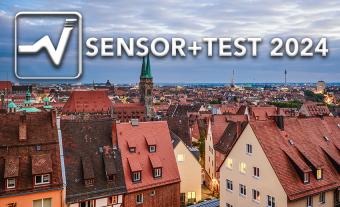
Sensor+Test 2024
June 11 - 13, 2024
Nürnberg,
Germany
Join us at Sensor+Test 2024 in Nuremberg, the world's leading forum for sensor, measurement, and testing technology. We are excited to showcase our innovative Pyro and Thermopile Detectors, PCO camera systems, and more advanced detectors from Excelitas at booth number 1-324, part of the "German Strategic Partnership for Sensor Technologies"...

Sensors Converge 2024
June 25 - 26, 2024
Santa Clara,
CA,
United States
Sensors Converge 2024 has evolved to a larger more diversified event focusing on electronics technologies and embedded systems that work hand-in-hand with sensors. From enabling innovation, to process design & control development, to transforming markets, Sensors Converge covers technologies and applications that are driving smart sensor innovation into the era...
Live Webinars
There are currently no upcoming live webinars. Please visit us again soon to view new webinars.
Webinars On Demand
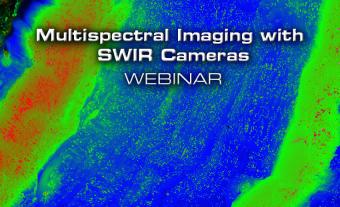
Multispectral Imaging with SWIR Cameras
The newly released SWIR image sensors for multispectral imaging applications in the extended range from VIS via NIR to SWIR has become more affordable and interesting. This webinar discusses how simple and easy multispectral imaging can be with the right systems in place. A combination of the SWIR camera, pco.pixelfly...

Advantages of Wide-Field Microscopy in High-Throughput Industrial Applications
Micro-imaging is critical to a wide range of industrial applications. Market and technological drivers continue putting demands on optical performance. In this webinar, an overview was provided of how wide-field modular systems can improve optical throughput via modularity, autofocus, and design. Register below to view this webinar recording. About the...

LiDAR - Key Enabling Technology for Autonomous Driving
This presentation delves into a general overview on LiDAR from a pulsed laser diode manufacturer's perspective, addressing key topics such as wavelength considerations, packaging restrictions, reliability, and prospects in the field. Register below to view the webinar recording. About the Presenter: Jens Krause is Applications Engineer for High Performance Sensors...

Precision, Control and Repeatability: Harnessing the Power of UV Curing in Medical Manufacturing
Register below to view the webinar recording. Overview: In the dynamic world of medical product manufacturing, ultraviolet (UV) curing technology has evolved into an indispensable tool for coatings, inks, and adhesives across a diverse range of medical products, including syringes, catheters, hearing aids and medication patches. UV curing enables the...
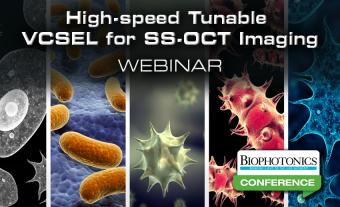
High-speed Tunable VCSEL for SS-OCT Imaging
This presentation discussed the introduction and integration of swept vertical-cavity surface-emitting lasers (VCSELs) to address challenges in OCT imaging. OCT has revolutionized non-invasive imaging in many biomedical fields, but the need for reduced image collection time and easier image interpretation is ongoing. Axsun Azmyth™ VCSELs offer high speeds, high ranging...
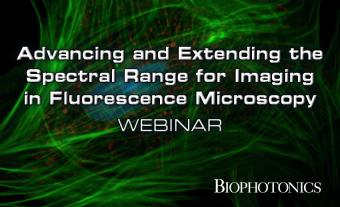
Advancing and Extending the Spectral Range for Imaging in Fluorescence Microscopy
This webinar discusses the advances in fluorescence illumination and detection in biological microscopy, expanding research capabilities from visible to shortwave infrared (SWIR) spectral ranges. New versatile light sources and an innovative InGaAs camera system enable precise excitation and imaging of fluorophores in biomedical applications, including in vivo and intra-vital microscopy...
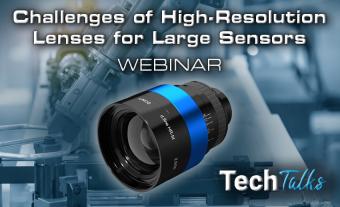
Challenges of High-Resolution Lenses for Large Sensors
The webinar discusses the basics and current trends in lenses and optics for image processing and machine vision. About the Presenter: Arthur Stauder / Dipl-Ing. (FH), is the Product Manager for LINOS Machine Vision Lenses and Rodenstock Photo Optics at Excelitas Technologies. He holds a degree in Photoengineering from the...

Optimizing Inkjet Printing Adhesion for Wire & Cable Marking
Digital inkjet printing wire & cable provides manufacturers with productivity advantages including variable data, fast changeover & indelible printing at top line speeds. However, material properties, contamination, ink/material compatibility & durability requirements create challenges. Fortunately, a trilogy of suppliers have worked together to develop repeatable solutions for printing on a...

Compact and Customizable SS-OCT Platform for Rapid Integration and Product Development
Swept Source Optical Coherence Tomography (SS-OCT) system performance is primarily determined by the rapid tuning speed and wide tuning bandwidth of the swept laser source as well as the capabilities of the data acquisition (DAQ) electronics such as sampling rate, data interface bandwidth, and on-board signal processing capabilities. Effectively integrating...
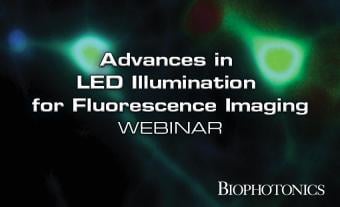
Advances in LED Illumination for Fluorescence Imaging
LED illumination for fluorescence microscopy systems has progressed significantly from a time when LED sources had low optical power and a limited range of wavelengths. While the benefits of LED technology drew interest, the limitations prevented large-scale adoption. Advances in the semiconductor industry have now been able to eliminate many...

How to Optimize LiDAR Performance with Next Generation Sensors
From laser levels and surveying equipment to advanced robotics, range finders, ADAS and LiDAR mapping systems, today’s products demand enhanced vision components with innovative performance, robust designs and added value engineering. In this webinar, we discuss how next-generation Pulsed Laser Diode emitters and high-performance Avalanche Photodiode sensors empower the vision...
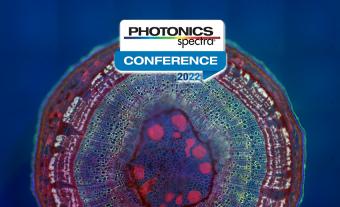
How Camera Pixel Size and Modulation Transfer Function Affect Modern Microscopy and See the Invisible with Microscopes
Microscope designs are moving toward larger field-of-view and larger image circles to capture more information with the recording of a single image. For that reason, camera manufacturers are designing and creating new scientific cameras with larger image sensors and diagonals as well. Proper selection of pixel size according to the...
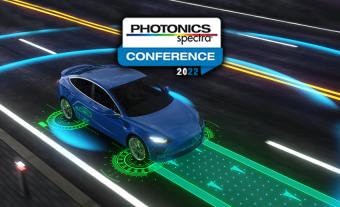
Trends in Emitters for Lidar
This presentation explores individual trends in lidar emitters and how they are advancing the performance and adoption of automotive lidar systems. Branko Petrov explains how edge-emitter lasers remain the most commonly deployed lidar sources today, despite mounting competition with VCSELs. Meanwhile, higher-density monolithic laser arrays are enabling lidar systems with...
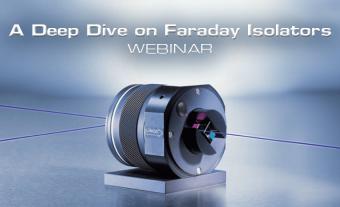
A Deep Dive on Faraday Isolators
Faraday Isolators date back to 1845 when Michael Faraday discovered the magneto-optical effect when studying the influence of a magnetic field on plane-polarized light waves. This effect became fundamentally important with the invention of the laser. A basic principle of laser operation is stimulated emission which poses a challenge with...

Achieving High Throughput Submicron Inspection with Precision Autofocusing
In modern industrial inspection applications, accurate quality control and increased throughput are essential for cost-effective inspection. The increasing demand to resolve finer details, which results in a small depth of field, necessitates the need to quickly and accurately focus on your target. These requirements tend to drive complex system design...

How to Simplify Your Lens Selection Process with MachVis OnLine
Choosing a lens with so many lens and accessory options available can sometimes be overwhelming, time consuming and confusing and may even result in selecting a lens that may not be optimal for your machine vision application. In this webinar, we will demonstrate how the new MachVis OnLine Lens Configurator...

Mid-Distance Presence Detection
When it comes to low-power human recognition, pyroelectric passive IR sensors have proven to be the most optimal solution. With the proper lens design, motion can be easily detected over several tens of meters. However, designing a lens into a thin device is a real challenge. Capacitive sensors and proximity...
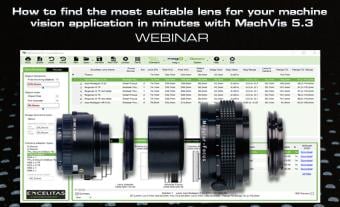
How to find the most suitable lens for your machine vision application
When choosing lenses for your machine vision application, there are many options of lenses and accessories to consider. Choosing a lens can be overwhelming, time consuming and confusing and may even result in a lens that is not best suited for your application. This webinar will demonstrate how MachVis 5.3...
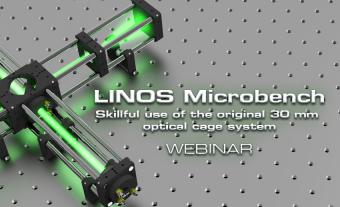
LINOS Microbench - Skillful Use of the Original 30 mm Optical Cage System
Optomechanical setups can be designed to be compact and stable, while ensuring traceability of the optical system. With the ability to integrate additional optical and mechanical components, a multitude of optomechanical set ups become possible to meet specific experimental needs. During this webinar we will feature the LINOS Microbench –...
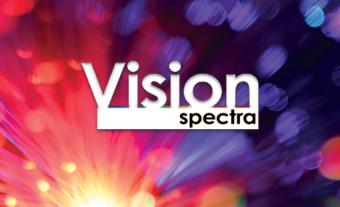
Next-Generation Lasers and Detectors for LiDAR and Range Finders
From laser levels and surveying equipment, to advanced robotics, range finders and LiDAR mapping systems, today’s products demand enhanced vision components with innovative performance, robust designs and added value engineering. Excelitas next-generation Pulsed Laser Diode Emitters and high-performance Avalanche Photodiode sensors empower the vision of tomorrow by extending range, reducing...
3D Optical Coherence Tomography for Industrial Applications
Optical Coherence Tomography (OCT) is an interferometric laser-based ranging modality which has dramatically impacted patient care in medical applications, but also has growing recognition as a valuable tool for industrial applications including PCB inspection, additive manufacturing, laser welding, and 3D metrology. Register below to view this webinar recording to learn...
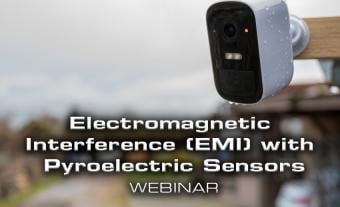
Electromagnetic Interference (EMI) with Pyroelectric Sensors
Pyroelectric sensors comprise of a material which is not only highly sensitive to thermal changes but will also pick up mechanical and electro-magnetic distortions. The latter can be very frustrating since in many cases, it arises only in the last stage of product design and may require major changes. This...

Presence Detection With Ultra-Low Power IR Sensors
Despite emerging new technologies, the advantages of passive infra-red sensors are unsurpassed. Especially in the field of battery-operated devices, there are currently no alternatives on the market which only activate when a person is detected or present. During this webinar, we will provide an update of the latest trends and...

Cermax Xenon Lamps for Medical Lighting
The Excelitas Cermax Xenon lamp revolutionized the medical lighting world upon its introduction, and continues to be the preferred light source for high brightness, true color applications. This webinar will discuss the revolutionary technology and benefits of high-intensity, perfect-white light output for medical illumination, including Cermax technology innovations past and...
Industrial Applications of Swept Source Optical Coherence Tomography (SS-OCT)
Optical Coherence Tomography (OCT) is an interferometric laser-based ranging modality which has dramatically impacted patient care in medical applications, but also has growing recognition as a valuable tool for industrial applications including PCB inspection, additive manufacturing, laser welding, and 3D metrology. OCT is non-destructive and high-resolution like CT imaging, but...

Leveraging the Versatility of Modular Microscopy
Inherent to every imaging application is a unique set of parameters requiring optimization to increase the success rate of the task at hand. The range of parameters is often large and it is not always effective to optimize through simulations alone. In addition, full product development cycles can be costly...

Webinar Recording: UVC Disinfection
Before the advent of modern medicine, ultraviolet germicidal irradiation (UVGI) was used as both a treatment and a preventive measure for a variety of diseases. Regardless of the final process, the science behind killing the microorganism is the same; UV energy damages the DNA of the microorganism, rendering it unable...
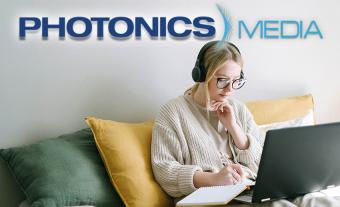
LED Lighting for Fluorescence Microscopy: A Sustainable Illumination Option
Fluorescence imaging in life sciences and microscopy applications has traditionally used mercury, metal halide, and xenon arc lamps for illumination. With advances in technology, LEDs are now able to replace arc lamps. In addition to delivering enhanced image quality and cost savings, LEDs are mercury-free, thus reducing toxic waste. Recording...

Optimizing Inkjet Printing Adhesion for Wire & Cable Marking
Digital inkjet printing wire & cable provides manufacturers with productivity advantages. However, material properties, contamination, ink/material compatibility & durability requirements create challenges. Join experts from Excelitas, Gem Gravure, and Enercon in a webinar that will cover how to overcome these challenges and optimize adhesion for wire and cable marking.

Remote Human Body Temperature Measurement
The COVID-19 virus has been rapidly spreading across the globe. One of the most common symptoms of the infection is fever, which manifests itself in an elevated facial skin temperature. Using non-contact technology to quickly identify people with elevated skin temperatures is essential.





